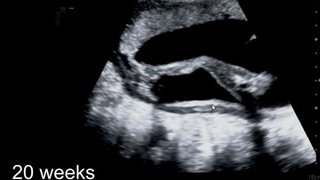What happens if I get pregnant with an IUD?
June 26, 2018

The intrauterine device (IUD) is one of the most popular and reliable forms of reversible birth control on the market. It’s a small T-shaped device made of either copper or hormone-embedded plastic that is inserted through the cervix into the uterine cavity and designed to prevent fertilization. There are two strings attached that a doctor, advanced practice nurse, or physician assistant can use to remove the IUD when it expires (after 3 to 10 years, depending on the type used), when a patient chooses to become pregnant, or, in rare cases, when a complication develops.
About 10 percent of women choose this type of birth control because the risk of pregnancy is so low – less than 1 percent per year. Many women have an IUD placed right after delivery so they go home from the hospital with an established birth control method.
However, no form of birth control is 100 percent effective. While rare, it’s possible to become pregnant while using an IUD. Such was the case for a patient I saw in the spring of 2018. She had an IUD, and when she took a home pregnancy test, it was positive. The patient came in for an ultrasound, and the reason for the IUD failure was obvious – the IUD was sitting in the cervix, not higher up in the uterus where it could have been three times as effective at preventing pregnancy.
In the rare event that pregnancy occurs when an IUD is in place, there are risks to the patient and the pregnancy. Women need to seek care from an Ob/Gyn to reduce the risk of serious complications.
How we handle pregnancy with an IUD

Our first step is to determine the type of pregnancy, which could be either:
● Intrauterine, which is the normal location for pregnancy development, allowing for fetal growth over 9 months, or
● Ectopic, which is when a fertilized egg implants in a fallopian tube or other location outside the uterus and poses serious health risks to the woman
We used to believe that having an IUD increased the risk of having an ectopic pregnancy. Now we understand that because IUDs are so effective at preventing intrauterine pregnancies that, if a pregnancy does occur, there’s a higher likelihood that it developed outside the uterus. But patients aren’t at increased risk for ectopic pregnancies just because they have an IUD.

Next, we look for the IUD strings in the cervix to potentially remove the device. Studies have shown that the risk of miscarriage, preterm birth, and infection of the amniotic sac and fluid before delivery (chorioamnionitis) is significantly higher when IUDs are left in place during pregnancy compared to pregnancies in which the IUD is removed. However, while taking out the IUD improves the pregnancy outcome, there is still a higher risk of pregnancy complications compared to patients who never had an IUD in place. For most women whose IUD strings are visible through the cervix, we recommend removal of the IUD at the first visit.
In some women, the IUD strings curl up into the cervix. When that happens, we sometimes can use a small tool to grasp the strings, or use ultrasound guidance to retrieve the IUD. However, because the uterus has grown with the enlarging fetus, the IUD sometimes cannot be reached. In these cases, we have to leave the IUD in place because searching for it could inadvertently injure the mother or pregnancy. After delivery, we will make sure to locate the IUD within the placenta, membranes, or uterus.
For women with ectopic pregnancies, we recommend treatment, which can be a medication or can involve surgery. Ectopic pregnancies are dangerous because of the high risk of rupture and hemorrhage. If ectopic pregnancy occurs, the risks for the patient include severe pain, infection, and even death.

Sign up for DFWChild’s Week-by-Week Guide to Pregnancy, presented in partnership with UT Southwestern Medical Center, to get timely information and updates.
What to do if you have an IUD and suspect pregnancy
First, take a home pregnancy test. Today’s tests are very good at diagnosing pregnancy early. If the test is negative and you’re still worried, call your health care provider, who can answer your questions, perform an exam, or do additional testing if you need it.
If your test is positive, call your Ob/Gyn and explain your situation. The doctor can order an ultrasound and perform an exam. If you develop right- or left-sided pelvic pain with vaginal bleeding and can’t be seen by your doctor right away, it’s reasonable to visit the emergency department because the cause might be an ectopic pregnancy.
IUDs are an incredibly good form of birth control for many women, but no contraceptive is 100 percent effective. If you’re considering an IUD, talk to your doctor or other healthcare provider about whether this form of highly effective contraception is right for you.










